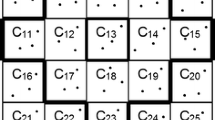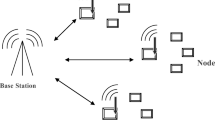Abstract
Advances in lattice-based cryptography are enabling the use of public key algorithms (PKAs) in power-constrained ad hoc and sensor network devices. Unfortunately, while many wireless networks are dominated by group communications, PKAs are inherently unicast—i.e., public/private key pairs are generated by data destinations. To fully realize public key cryptography in these networks, lightweight PKAs should be augmented with energy efficient mechanisms for group key agreement. Recently, many key management schemes for the WSNs have been proposed, but the computation and communication costs of these protocols are too high to suitable for WSNs. This paper proposes a key establish protocol for the WSNs based on combined key. The protocol adopts seed key mapping technology to achieve two-party and multi-party key establish in the WSNs, it can generate a large number of combination keys with little resources. So it effectively solve the contradiction between the sensor nodes need large storage space to store shared key with their neighbors and their limited storage space. It can also achieve mutual authentication between nodes when they establish shared key. Analysis shows that the proposed protocol has the advantages in storage efficiency, computation consumption and Communication consumption and suitable for wireless networks.






Similar content being viewed by others
References
Fanian, A., & Berenjkoub, M. (2012). An efficient end to end key establishment protocol for wireless sensor networks. In 9th international ISC conference on information security and cryptology (ISCISC) (pp. 73–79).
Znaidi, W., & Minier, M. (2012). Key establishment and management for WSNs. Telecommunication Systems, 50(2), 113–125.
Li, M., Yu, S., Guttman, J. D., Lou, W., & Ren, K. (2013). Secure ad hoc trust initialization and key management in wireless body area networks. ACM Transactions on Sensor Networks, 9(2), 18.
Li, Y., Chen, D., Li, W., Wang, G., & Smith, P. (2013). A hybrid authenticated group key agreement protocol in wireless sensor networks. International Journal of Distributed Sensor Networks, 9(4), 1–14.
Yang, G., Wang, J. T., et al. (2007). A key establish scheme for WSN based on IBE and Diffie–Hellman algorithms. Chinese Journal of Electrics, 35(1), 180–184.
Shi, W., & Zhang, Z. (2012). Fuzzy identity-based key agreement scheme for wireless sensor networks. International Journal of Advancements in Computing Technology, 4(2), 222–230.
Jeong, Y.-S., Hwang, Y.-C., Kim, G.-S., Lee, S.-H. (2007). Key pre-distribution scheme for little storage space and strong security strength in large-scale wireless sensor network. In International conference on convergence information technology (pp. 1572–1577).
Shan, T.-H., Liu, C.-M., (2008). Enhancing the key pre-distribution scheme on wireless sensor networks. In The 2008 IEEE Asia–Pacific services computing conference (pp. 1127–1131).
Li, X., Shen, J., (2009). A novel key pre-distribution scheme using one-way hash chain and bivariate polynomial for wireless sensor networks. In The 3rd international conference on anti-counterfeiting, security, and identification in communication (pp. 575–580).
Gaur, A., Toshniwal, S., Prakash, A., & Agrawal, D. P. (2010). Enhanced location based key pre-distribution scheme for secure communication in wireless sensor network (WSN). In 2010 IEEE 7th international conference on mobile ad hoc and sensor systems (MASS) (pp. 552–557).
Martin, K. M. (2009). On the applicability of combinatorial designs to key pre-distribution for wireless sensor networks. Lecture Notes in Computer Science, 5557, 124–145.
Paterson, M. B., & Stinson, D. R. (2012). A unified approach to combinatorial key pre-distribution schemes for sensor networks. Designs, Codes and Cryptography, 71(3), 1–26.
Lee, J., & Stinson, D. R. (2008). On the construction of practical key pre-distribution schemes for distributed sensor networks using combinatorial designs. ACM Transactions on Information and System Security - TISSEC, 11(2), 1–35.
Subash, T. D., Divya, C. (2011). Novel key pre-distribution scheme in wireless sensor network. In 2011 international conference on emerging trends in electrical and computer technology (ICETECT) (pp. 959–963).
Perrig, A., & Szewczyk, R. (2002). SPINS: Security protocols for sensor networks. Wireless Networks, 8(5), 521–534.
Huang, H. P., Wang, R. C., Sun, L. J., & Xiao, F. (2009). Key distribution scheme of wireless sensor networks based on logic grid. Journal on Communications, 30(8), 131–140.
Hou, H., & Liu, S. (2009). CPK-based authentication and key agreement protocols with anonymity for wireless network. In 2009 International conference on multimedia information networking and security (Vol. 2009, pp. 347–350).
Shi, H, He, M, & Qin, Z. (2006). Authenticated and communication efficient group key agreement for clustered ad hoc networks. In 5th International conference on cryptology and network security—CANS 2006. Lecture notes in computer science (Vol. 4301, pp. 73–89).
Abdel-Hafez, A., Miri, A., & Oronzo-Barbosa, L. (2007). Authenticated group key agreement protocols for ad hoc wireless networks. International Journal of Network Security, 4(1), 90–98.
Konstantinou, E. (2008). Cluster-based group key agreement for wireless ad hoc networks. In 3rd International conference on availability, reliability and security—ARES 2008 (pp. 550–557).
Feng-Yu, L., Guo-Hua, C., & Xiao-Ding, L. (2007). Ad hoc networks security mechanism based on CPK. In International conference on computational intelligence and security workshops (Vol. 2007, pp. 522–525).
Chatterjee, S., Das, A. K., & Sing, J. K. (2014). An enhanced access control scheme in wireless sensor networks. AD HOC & Sensor Wireless Networks, 21(1), 121–149.
Halford, T. R., Courtade, T. A., Chugg, K. M., & Li, X. (2015). Energy-efficient group key agreement for wireless networks. IEEE Transactions on Wireless Communications, 14(10), 5552–5564.
Shen, J., Tan, H., Moh, S., Chung, I., Liu, Q., & Sun, X. (2015). Enhanced secure sensor association and key management in wireless body area networks. Journal Of Communications And Networks, 17(5), 453–462.
Porambage, P., Braeken, A., Schmitt, C., Gurtov, A., Ylianttlia, M., & Stiller, B. (2015). Group key establishment for enabling secure multicast communication in wireless sensor networks deployed for iot applications. IEEE Access, 3(1), 1503–1511.
Ghafoor, A., Sher, M., Imran, M., & Saleem, K. (2015). A lightweight key freshness scheme for wireless sensor networks. In 12th International conference on information technology—new generations (ITNG) (pp. 169–173).
Makri, E., & Konstantinou, E. (2011). Constant round group key agreement protocols: A comparative study. Computers and Security, 30(8), 643–678.
Acknowledgements
Research supported by the PhD Research Fund of the Zhengzhou University of Light Industry, National Natural Science Foundation of China under Grant Nos. 61370063, 61572445 and 61501406).
Author information
Authors and Affiliations
Corresponding author
Rights and permissions
About this article
Cite this article
Zhang, Q., Yuan, J., Guo, G. et al. An Authentication Key Establish Protocol for WSNs Based on Combined Key. Wireless Pers Commun 99, 95–110 (2018). https://doi.org/10.1007/s11277-017-5040-3
Published:
Issue Date:
DOI: https://doi.org/10.1007/s11277-017-5040-3




